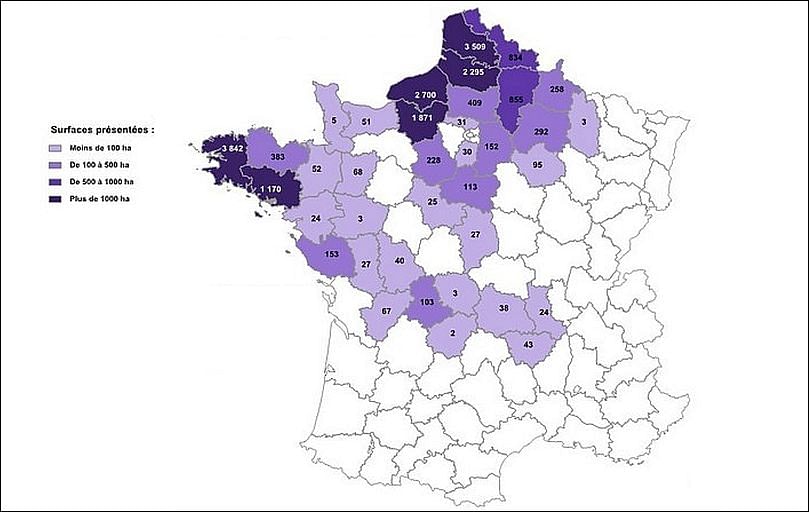The potato ('pomme de terre') was introduced to France at the beginning of the 17th century, but its true value as food was not recognized until the late 18th century, when a renowned army chemist, A.A. Parmentier, recommended it as the solution to endemic famines that were then devastating the country.
Potato cultivation took off, with output rising from 1.5 million tonnes in 1803 to 11.8 million in 1865. Production reached its zenith in 1965, with a harvest of around 16 million tonnes. In the decade after, production declined rapidly to a level of 6 million tonnes. Since then, production is more or less stable at that level. For 2017 the total potato production is estimated at 6.1 million tonnes. About one million tonnes of France's potatoes are destined for the domestic fresh market, and one million tonnes for the processing industry.

Where in France are potatoes grown? Cultivation areas presented are based on the potato production in 2016 (Source: GNIS)
France is Europe's No. 1 exporter of fresh potatoes, with nearly 1.5 million tonnes shipped in 2005/2006.
The area used for the production of seed potatoes has steadily grown in the last ten years from 14 500 ha to 19 000 ha in 2014/2015.
The most grown potato varieties in France (based on seed area in 2014) are:
- Spunta
- Bintje
- Agata
- Charlotte (firm flesh)
- Markies
- Kaptah Vandel (Starch Industry)
- Mona Lisa
- Lady Claire
- Amyla (Starch Industry)
- Amandine (firm flesh)
Today, the potato still has an important place in the national diet: the French consume each year over 50 kg per capita of potatoes, about half of that in the form of processed potato products.
